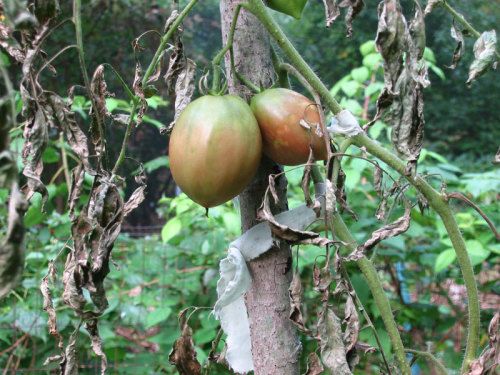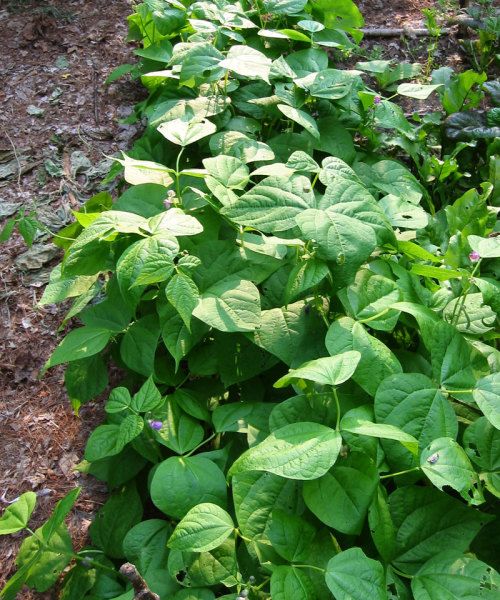
What a summer it has been in the Northeast! It’s mid-August, and the lawns are lush and green. That’s because it’s rained nearly every day, mostly torrential downpours, and the temperature has rarely topped 90° (or even 85°). What does this mean for the vegetable garden? In my case, early onset late blight. My towering tomato vines that just a few weeks ago were laden with flowers and fruit are starting to succumb, as leaf browning moves up the stem. Fruits turn a sickly brown, with patches of fuzzy white.
Last week, I managed to salvage enough unaffected tomatoes (Juliets) to assemble a small tomato salad. I savored it, knowing that there wouldn’t be many more this year, and certainly not enough to stew and freeze for use during the winter.
This following morning, hoping to cut my losses and salvage something from my tomato patch, I headed out to the garden with pruners and a big black plastic bag. I ripped out 10 diseased plants and clipped off affected fruit from several others. Blighted plants should not be composted, so these will be headed to the dump.
What’s the lesson here?
You can control only so much in your garden. Even if you follow best practices for amending the soil, starting seeds, weeding, watering, and managing pests and diseases, success is not guaranteed. One of the things you cannot control is the weather.
Every year, some crops do better than others, and that’s a really good reason to diversify your plantings. Instead of growing a lot of one thing, grow smaller amounts of several vegetables (or several varieties of the same vegetable). Gradually you’ll figure out what usually does well in your garden and what your family likes to eat.
This summer, lettuce, parsley, greens, beets, mint, green and yellow bush beans, blueberries and blackberries have been fantastic. Squash and cukes are lagging. Basil is small, but decent. Strawberries were not so great. And tomatoes, well, we’ve already discussed them, and the topic is too painful to revisit. So there won’t be much gazpacho this year, but there will be borscht. And fruit cobbler. And pesto.
Next year might be better, might be worse. It will almost certainly be different.
Fine Gardening Recommended Products

The Regenerative Landscaper: Design and Build Landscapes That Repair the Environment
Fine Gardening receives a commission for items purchased through links on this site, including Amazon Associates and other affiliate advertising programs.

A.M. Leonard Deluxe Soil Knife & Leather Sheath Combo
Fine Gardening receives a commission for items purchased through links on this site, including Amazon Associates and other affiliate advertising programs.

The New Organic Grower, 3rd Edition: A Master's Manual of Tools and Techniques for the Home and Market Gardener, 30th Anniversary Edition
Fine Gardening receives a commission for items purchased through links on this site, including Amazon Associates and other affiliate advertising programs.




















Comments
Log in or create an account to post a comment.
Sign up Log in